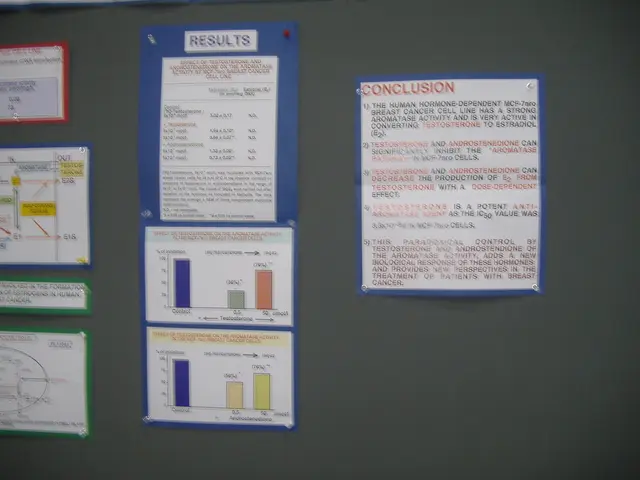Transforming the GambleAware Report on Transparency
GambleAware Investigated Openness Regarding Gambling Activities
Let's delve into the revelations of GambleAware's groundbreaking study, a project initiated to unravel the impact of transparency on gambling harm. This investigation, led by the savvy team at Bournemouth University, aimed to determine if operators openly conveying safer gambling practices could potentially lower the risk of gambling-related harm among customers.
Unveiling Transparency's Role in Gambling
The study scrutinized diverse elements affecting gambling harm, and ascertained that gambling operators can play a crucial role in curbing harm rates by openly communicating their game's probability, offering extensive educational resources, and maintaining transparency with regards to customer data usage.
This thorough investigation assessed the safer gambling practices and transparency commitments of numerous companies. Their findings were cemented by collaborative studies, encompassing an initial scoping review mapping the abundance of academic research on iGaming and safer gaming, a review focusing on transparency in persuasive technologies, a systematic review examining transparency in responsible gambling, and a content analysis of transparency within the UK's online gaming landscape.
Zoë Osmond, GambleAware's CEO, lauded the report's recommendations and used the platform to encourage the government to expedite the Gambling Act white paperfinalization.
Key Findings
The research revealed that all examined websites showcased the legal gambling age clearly, even linking to safer gambling organizations like GambleAware. While most sites displayed logos of these organizations, a few only linked them directly. The study reported that mobile sites tend to be less meticulously designed than desktop versions, and safer gambling web pages often received less attention in terms of design.
When evaluating the implementation of transparency, the research highlighted room for improvement, particularly in persuasive systems designed to modify customer behavior. The report underscored the importance of customer-centric design tools and informing clients the reasons behind specific offers, aiding them in better understanding their data usage.
Bournemouth University's Suggestions
The paper acknowledged that balancing transparency with other objectives might prove challenging for certain operators. It explained that complex algorithms, though more efficient, can also be harder for customers to comprehend. Furthermore, intrusive safety-based pop-ups could potentially annoy users. The paper recommended that operators employ pop-ups in a way that doesn't disrupt users' gaming experience. The paper also advised placing safer gambling links at the top, strengthening more prominent visibility, especially for mobile websites, and advocating for multiple safer gambling organization links.
In conclusion, the report advocated for increased transparency, and better presentation of safer gambling messages in a manner that resonates with users. The paper also urged industry bodies to collaborate with professionals in psychology, computer sciences, and related fields to delve deeper into this unexplored topic, ultimately yielding practical guidelines for operators to seamlessly integrate safer gambling practices.
[1] https://www.gambleaware.org/about-us/media-centre/press-releases-archive/2019-press-releases/symbolic-statue-unveiled-marking-85000-children-experiencing-gambling-harma-uk[2] https://www.gambleaware.org/about-us/media-centre/press-releases-archive/2015-press-releases/supporting-vulnerable-gamblers[3] https://www.gambleaware.org/about-us/media-centre/press-releases-archive/2016-press-releases/startling-statistics-show-uk-teens-frighteningly-ignorant-risks-gambling[4] https://www.gambleaware.org/about-us/media-centre/press-releases-archive/2020-press-releases/gambleaware-warns-against-covid-19-online-gambling-scams[5] https://www.gambleaware.org/about-us/media-centre/press-releases-archive/2020-press-releases/gambleaware-launches-gambling-harm-campaign-in-scotland
- The GambleAware study highlighted that transparent gambling practices, including displaying the legal gambling age and linking to responsible gambling organizations like GambleAware, can potentially reduce the risk of gambling harm among customers.
- The research emphasized the importance of informing clients the reasons behind specific offers and using customer-centric design tools to aid customers in better understanding their data usage.
- In the UK's casino-and-gambling landscape, casino-games operators can lower the gambling harm rates by offering transparent gambling trends, maintaining transparency with regards to customer data usage, and providing extensive educational resources about responsible gambling.
- The report underscored the need for improved transparency in casino-culture, specifically in persuasive systems designed to modify customer behavior, and advocated for responsible gambling messages to be presented in a manner that resonates with users.
- The study revealed that operators in the UK casino-and-gambling industry should employ pop-ups and safer gambling links at the top, with stronger visibility, especially for mobile websites, and collaborate with professionals in psychology, computer sciences, and related fields to develop practical guidelines for seamlessly integrating responsible gambling practices.




